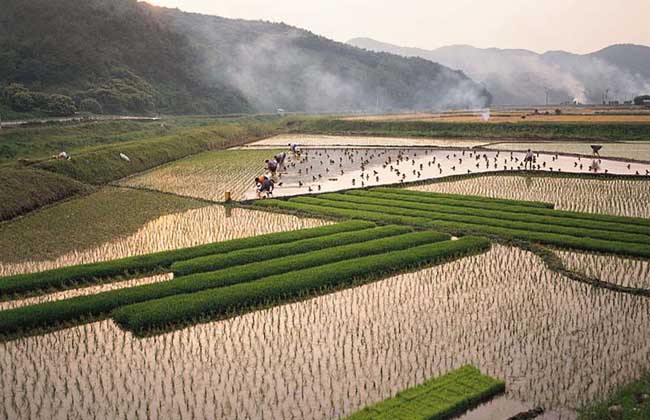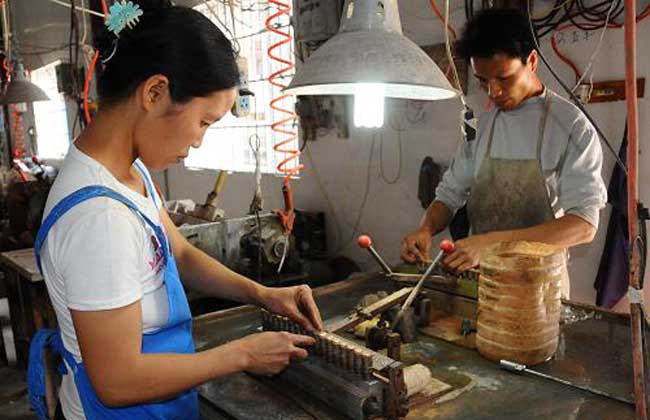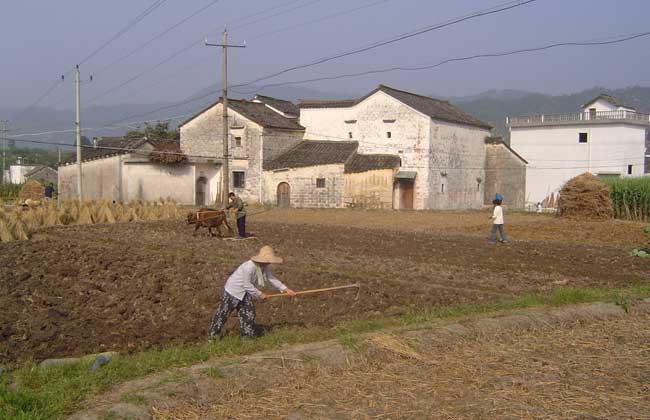Rural land transfer model

Rural land circulation actually refers to the transfer of land use right, which means that farmers with land contractual management right transfer the land management right (right to use) to other farmers or economic organizations on a voluntary basis, that is, to retain the right to contract and transfer the right to use. At present, the main types of rural land circulation are land exchange, lease, shareholding, cooperation and so on.
Rural land exchange
The exchange of land is the peasant household within the rural collective economic organizations. in order to facilitate farming and their respective needs, the simple exchange of the contractual management rights of their respective land is the only way to promote large-scale, industrialization and intensive management in rural areas. Thirty years ago, the land contract responsibility system was implemented in China's rural areas, and farmers were given land. But because the land is fat and thin, large plots of land are divided into pieces. All kinds of disadvantages left in the division of land seriously restrict the development of productive forces and the improvement of output. How to make the land centralized and connected to achieve large-scale and intensive management, so the exchange of this most primitive way of transaction, into the field of vision of farmers.
Payment of rent on rural land
Driven by market interests and under the guidance of the government, farmers lease their contracted land management rights to large households, owners or enterprise legal persons and other lessees, the term of the lease and the mode of rent payment shall be agreed by both parties themselves, and the lessee shall obtain the land management right for a certain period of time, and the lessor shall obtain the land management right rent in kind or currency annually. Among them, there are large leasing type, company leasing type, anti-lease type and so on.
Rural land shareholding
Shareholding, also known as "shareholding system" or joint-stock cooperative operation, refers to the establishment of a joint-stock company by valuing the management right of contracted land on the basis of insisting on the willingness of the contractor. In the process of land ownership, we should implement the two-way choice of rural land management (after farmers buy land into the company, they can continue to participate in land management or not), and farmers can own shares of the company by virtue of land contract rights. and dividends can be paid by shares. The biggest advantage of this form is that the property right is clear and the interests are direct, and the land contractual management rights of farmers are determined for a long time in the form of value. Farmers are not only the participants in the operation of the company, but also the owners of interests. It is a new breakthrough in the current circulation mechanism of rural land use rights.
Rural land replacement
Take Chongqing as an example, after it was approved by the state as a pilot area for comprehensive urban and rural reform last year, it took the lead in bold exploration in the field of land reform, creating a Jiulongpo model of land transfer, that is, residential land for housing and contracted land for social security. In other words, farmers give up rural homestead, homestead is replaced with urban development land, farmers get a set of housing in the city. Farmers give up the right to contracted management of rural land, enjoy urban social security, and establish a unified public service system in urban and rural areas.
Land stock cooperation
Ningyang County, Shandong Province, China has explored a new mechanism for the transfer of land contractual management rights, and established a land transfer distribution mode of "shares + cooperation". In this model, farmers jointly set up cooperatives with land management rights as shares, and the village guides farmers to participate in land contractual management rights in accordance with the principles of "voluntary participation of the masses, land ownership, intensive management, income dividend and interest protection". Cooperatives manage the land uniformly in accordance with democratic principles, and the co-operatives are no longer decentralized by farmers, and cooperatives are linked to leading enterprises for production and operation. Cooperatives implement the way of guaranteed land and dividends according to benefits. When distributing each year, they first pay members 700 yuan per share (mu) of guaranteed land, leaving enough public welfare funds and risk funds, and then carry out secondary dividends by shares.
Expanded Reading: rural Land flow Policy
The measures for the Administration of the transfer of contracted Management Rights of Rural Land, which was examined and adopted by the second executive meeting of the Ministry of Agriculture on January 7, 2005, is hereby promulgated and will enter into force as of March 1, 2005.
Chapter I General provisions
Article 1 these measures are formulated in accordance with the Rural Land contract Law and relevant provisions in order to standardize the circulation of rural land contractual management rights, safeguard the legitimate rights and interests of both parties involved in the transfer, and promote the development of agriculture and rural economy.
Article 2 the transfer of the contracted management right of rural land shall, on the basis of adhering to the household contractual management system of peasant households and stabilizing the contracted relationship of rural land, follow the principles of equal consultation, according to law, voluntary and paid.
Article 3 the transfer of the contracted management right of rural land shall not change the agricultural use of the contracted land, the circulation period shall not exceed the remaining period of the contract period, and shall not harm the legitimate rights and interests of interested parties and rural collective economic organizations.
Article 4 the transfer of the contracted management right of rural land shall be standardized and orderly. The circulation relationship formed according to law should be protected.
Article 5 the departments in charge of agricultural administration (or rural operation and management) of the people's governments at or above the county level shall, in accordance with the functions and duties prescribed by the people's governments at the same level, be responsible for the guidance of the transfer of contracted management rights and contract management of rural land within their respective administrative areas.
Chapter II transfer parties
Article 6 the contractor shall have the right to independently decide whether the contracted land is transferred and the object and mode of the transfer according to law. No unit or individual may force or hinder the contractor from transferring his contracted land in accordance with the law.
Article 7 the income from the transfer of the contracted management right of rural land shall be owned by the contractor, and no organization or individual may seize, intercept or withhold it.
Article 8 where the contractor voluntarily entrusts the contractor or intermediary organization to transfer its contracted land, the contractor shall issue a power of attorney for land transfer. The power of attorney shall specify the entrusted matters, authority and time limit, and shall have the signature or seal of the principal. Without the written entrustment of the contractor, no organization or individual has the right to decide in any way the contracted land for the transfer of farmers.
Article 9 the transferee of the transfer of the contracted management right of rural land may be the contracted peasant household or other organizations and individuals allowed to engage in agricultural production and operation in accordance with the relevant laws and regulations. Under the same conditions, members of this collective economic organization shall have priority. The transferee shall have the ability to operate agriculture.
Article 10 the mode, time limit and specific conditions for the transfer of the contracted management right of rural land shall be determined by both parties through consultation on an equal footing.
Article 11 where the contractor and the transferee reach an intention to transfer by subcontract, lease, exchange or other means, the contractor shall promptly put on record with the contract issuer, and if the transfer is by way of transfer, it shall submit an application for transfer to the contract issuer in advance.
Article 12 the transferee shall protect the land in accordance with the provisions of relevant laws and regulations and prohibit the change of the agricultural use of the transferred land.
Related
- A course of planting techniques and methods on how to grow carrots
- How to plant the latest tulips?
- Is it better to pick tea in the morning or in the afternoon? When is the best time for tea to be picked? what is the third or fifth tea?
- Launch Yuanxiao Happy combination Haocha + Tea Yuan healthy Taste
- Penghu Tourism "Fireworks 20 Parade with You"
- 2022 West Lake Happiness holds "Digital Revitalization Voucher" and draws iphone13 and laptop.
- Banqiao Fuzhou social houses are designed to change start-up combined with police elimination to create a safe and livable environment
- The convenient measure of "mechanical weeding" in Xinbei has been abused and the Agriculture Bureau has imposed heavy penalties on the illegal land consolidation.
- Changgeng University Joins Hands with Four Memory Factories to Rescue Memory Talent Shortage
- The list of Taiwan's top 100 MVP managers is listed by the Director-General of the Farmers' Association of Sanxia District.



